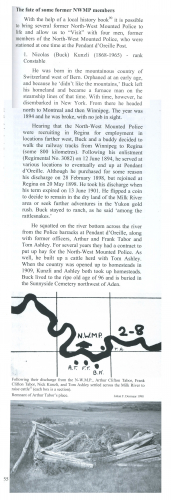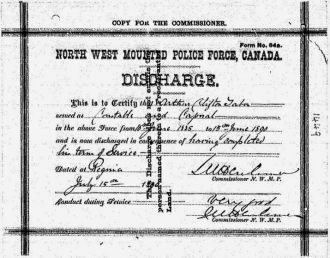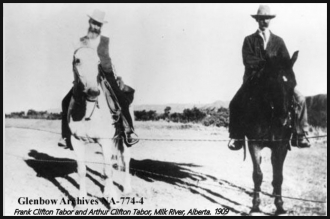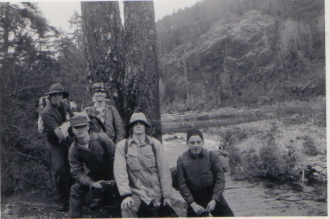Advertisement
Advertisement
Lynette McGeachie
About me:
I haven't shared any details about myself.
About my family:
I haven't shared details about my family.
Interested in the last names:
I'm not following any families.
Updated: March 12, 2024
Message Lynette McGeachie
Loading...one moment please


Recent Activity

Lynette McGeachie
updated a photo
Mar 12, 2024 9:47 AM
title, description
Kim M Hiscock, Family photos
Kim M Hiscock, Family photos

Lynette McGeachie
shared a photo
Mar 12, 2024 9:46 AM
Kim M Hiscock
Family photos
Family photos

Lynette McGeachie
updated a bio
Mar 12, 2024 9:44 AM

Lynette McGeachie
connected two people
Mar 12, 2024 9:41 AM

Lynette McGeachie
shared a bio
Mar 12, 2024 9:41 AM
Photos Added

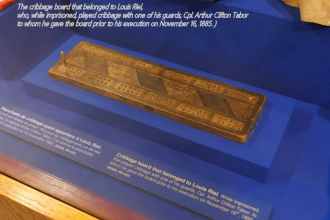
Arthur Clifton Tabor played Crib on this board with Riel
In the Louis Riel permanent display at le Musée de Saint-Boniface, kept safe under glass, is an old, slightly battered cribbage board that once belonged to the man himself.
It’s an unprepossessing item, not much to look at, at first glance. But it was a source of comfort to an imprisoned Riel as he faced a date with the hangman’s noose.
Alone in his cell in the weeks after his trial, one in which he was found guilty of high treason and sentenced to death by hanging, Riel would pass the time by playing cribbage.
His guard, North West Mounted Police Cpl. Arthur Clifton Tabor, was his opponent, right until that fateful day on Nov. 16 1885, when Riel, walking toward the scaffold where he would meet his death, handed the board to Tabor.
The board remained in Tabor’s family for generations, before making its way to the museum via a family member.
“This larger than life figure… imagine Riel in his jail cell going ‘15-2, 15-4 the rest don’t score,’ playing this all the while knowing death was coming for him… this board, that game, this humanizes him,” says historian Philippe Mailhot, who retired in 2014 after a 25-year tenure as the museum’s director.
It is items like this that give visitors to the Saint Boniface Museum a glimpse into the life of a man whose fight to defend the rights and identity of the Métis people is now etched in the annals of Manitoba history.
It’s an unprepossessing item, not much to look at, at first glance. But it was a source of comfort to an imprisoned Riel as he faced a date with the hangman’s noose.
Alone in his cell in the weeks after his trial, one in which he was found guilty of high treason and sentenced to death by hanging, Riel would pass the time by playing cribbage.
His guard, North West Mounted Police Cpl. Arthur Clifton Tabor, was his opponent, right until that fateful day on Nov. 16 1885, when Riel, walking toward the scaffold where he would meet his death, handed the board to Tabor.
The board remained in Tabor’s family for generations, before making its way to the museum via a family member.
“This larger than life figure… imagine Riel in his jail cell going ‘15-2, 15-4 the rest don’t score,’ playing this all the while knowing death was coming for him… this board, that game, this humanizes him,” says historian Philippe Mailhot, who retired in 2014 after a 25-year tenure as the museum’s director.
It is items like this that give visitors to the Saint Boniface Museum a glimpse into the life of a man whose fight to defend the rights and identity of the Métis people is now etched in the annals of Manitoba history.
People tagged:
Recent Comments

Lynette McGeachie
commented
Mar 12, 2024 9:23 AM
Lynette's Followers
Be the first to follow Lynette McGeachie and you'll be updated when they share memories. Click the to follow Lynette.
Favorites
Loading...one moment please



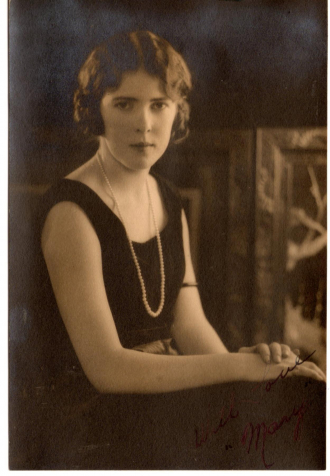
Mary (Hiscock) of 1331 Arm St, in Victoria, Capital County, BC Canada was born to Arthur Clifton Tabor and Lillian Ainley Snook. Mary (Hiscock) married John Charles Hiscock on December 25, 1942. Family, friend, or fan, this family history biography is for you to remember Mary Ada Clifton Tabor (Hiscock).

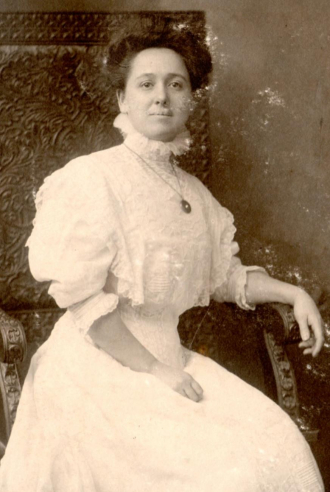
Lillian Snook was married to Arthur Clifton Tabor, and has a child Mary Ada Clifton Tabor (Hiscock). Family, friend, or fan, this family history biography is for you to remember Lillian Ainley Snook.


Arthur Clifton Tabor played Crib on this board with Riel
In the Louis Riel permanent display at le Musée de Saint-Boniface, kept safe under glass, is an old, slightly battered cribbage board that once belonged to the man himself.
It’s an unprepossessing item, not much to look at, at first glance. But it was a source of comfort to an imprisoned Riel as he faced a date with the hangman’s noose.
Alone in his cell in the weeks after his trial, one in which he was found guilty of high treason and sentenced to death by hanging, Riel would pass the time by playing cribbage.
His guard, North West Mounted Police Cpl. Arthur Clifton Tabor, was his opponent, right until that fateful day on Nov. 16 1885, when Riel, walking toward the scaffold where he would meet his death, handed the board to Tabor.
The board remained in Tabor’s family for generations, before making its way to the museum via a family member.
“This larger than life figure… imagine Riel in his jail cell going ‘15-2, 15-4 the rest don’t score,’ playing this all the while knowing death was coming for him… this board, that game, this humanizes him,” says historian Philippe Mailhot, who retired in 2014 after a 25-year tenure as the museum’s director.
It is items like this that give visitors to the Saint Boniface Museum a glimpse into the life of a man whose fight to defend the rights and identity of the Métis people is now etched in the annals of Manitoba history.
It’s an unprepossessing item, not much to look at, at first glance. But it was a source of comfort to an imprisoned Riel as he faced a date with the hangman’s noose.
Alone in his cell in the weeks after his trial, one in which he was found guilty of high treason and sentenced to death by hanging, Riel would pass the time by playing cribbage.
His guard, North West Mounted Police Cpl. Arthur Clifton Tabor, was his opponent, right until that fateful day on Nov. 16 1885, when Riel, walking toward the scaffold where he would meet his death, handed the board to Tabor.
The board remained in Tabor’s family for generations, before making its way to the museum via a family member.
“This larger than life figure… imagine Riel in his jail cell going ‘15-2, 15-4 the rest don’t score,’ playing this all the while knowing death was coming for him… this board, that game, this humanizes him,” says historian Philippe Mailhot, who retired in 2014 after a 25-year tenure as the museum’s director.
It is items like this that give visitors to the Saint Boniface Museum a glimpse into the life of a man whose fight to defend the rights and identity of the Métis people is now etched in the annals of Manitoba history.
People tagged:

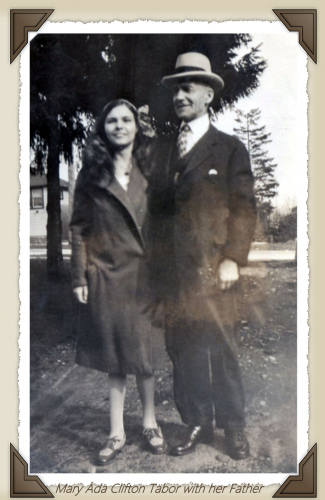
Arthur Clifton Tabor was born in December of 1865 in New Brunswick, Canada to unknown parents.
Arthur married Lillian Ainley Snook (1874 - 1963) in 1907 in Medicine Hat, Alberta, Canada and they had one daughter, Mary Tabor, who was born in 1916.


